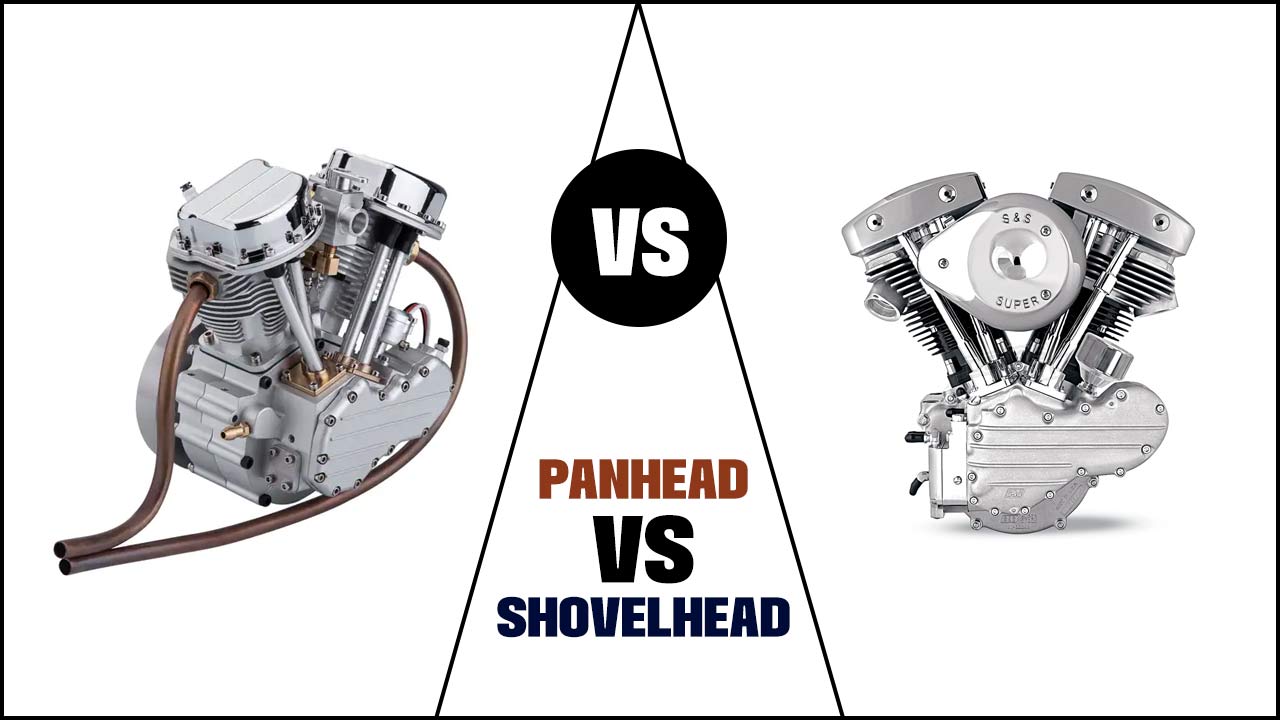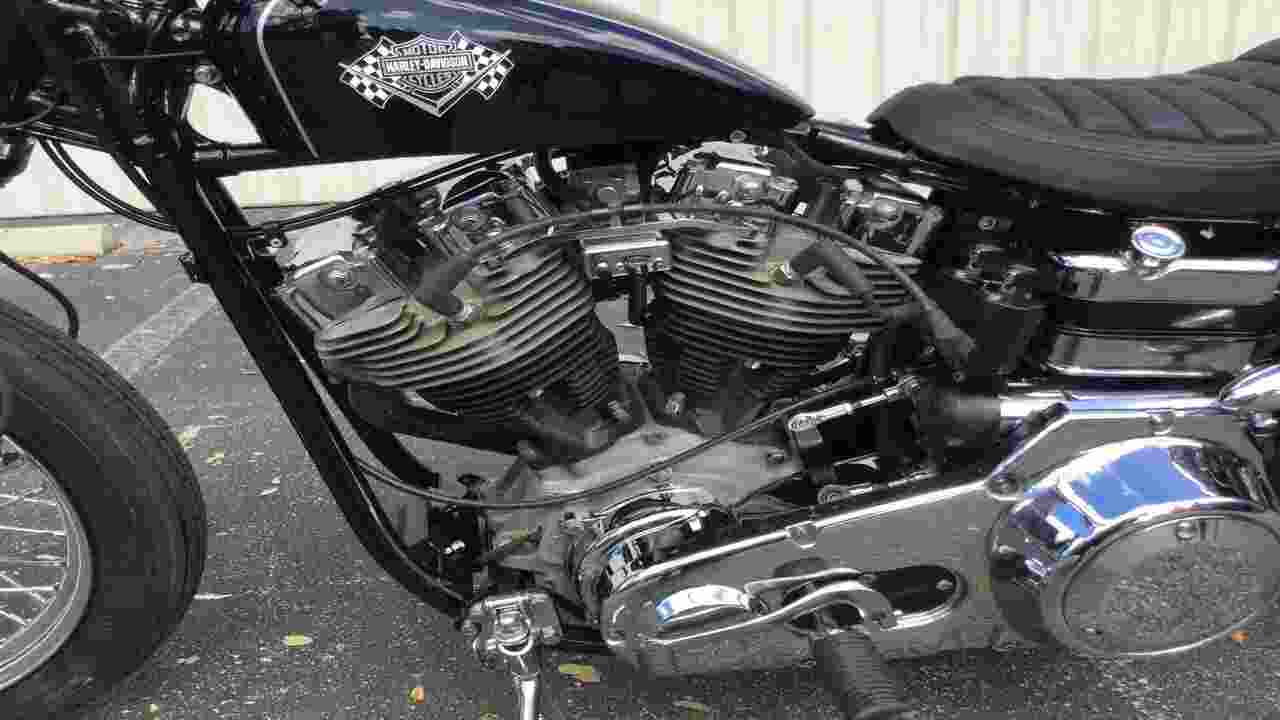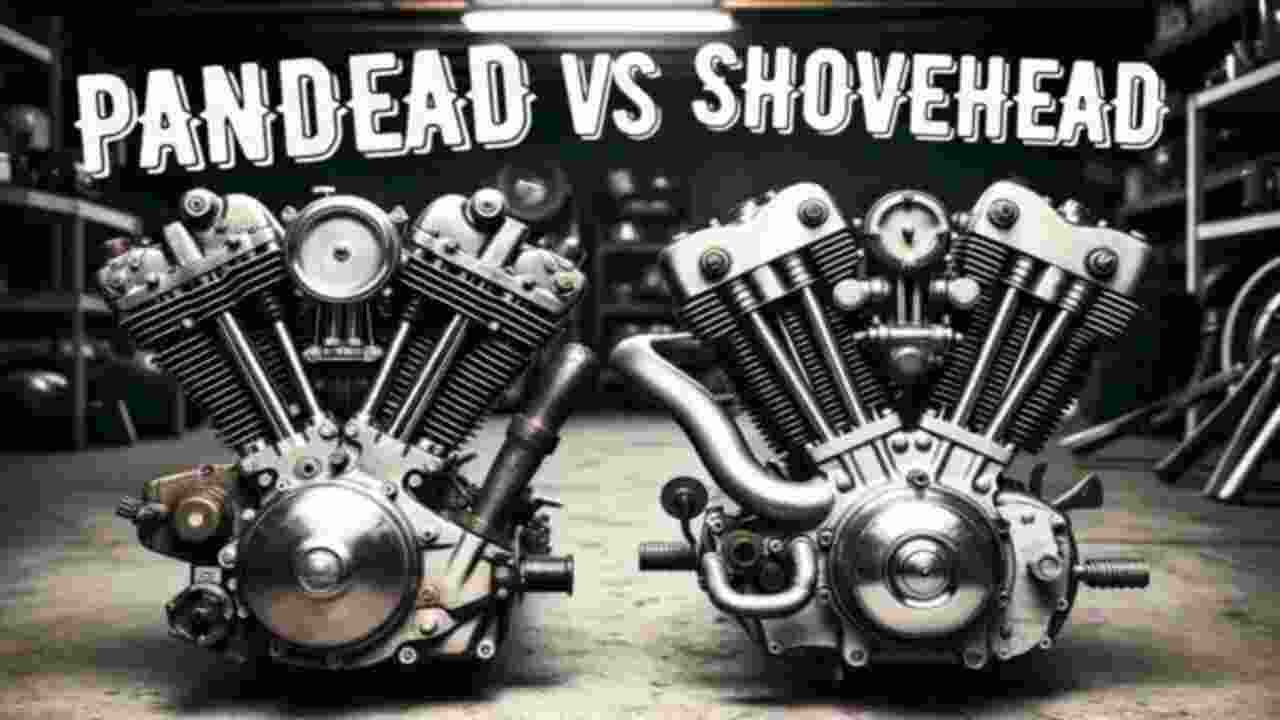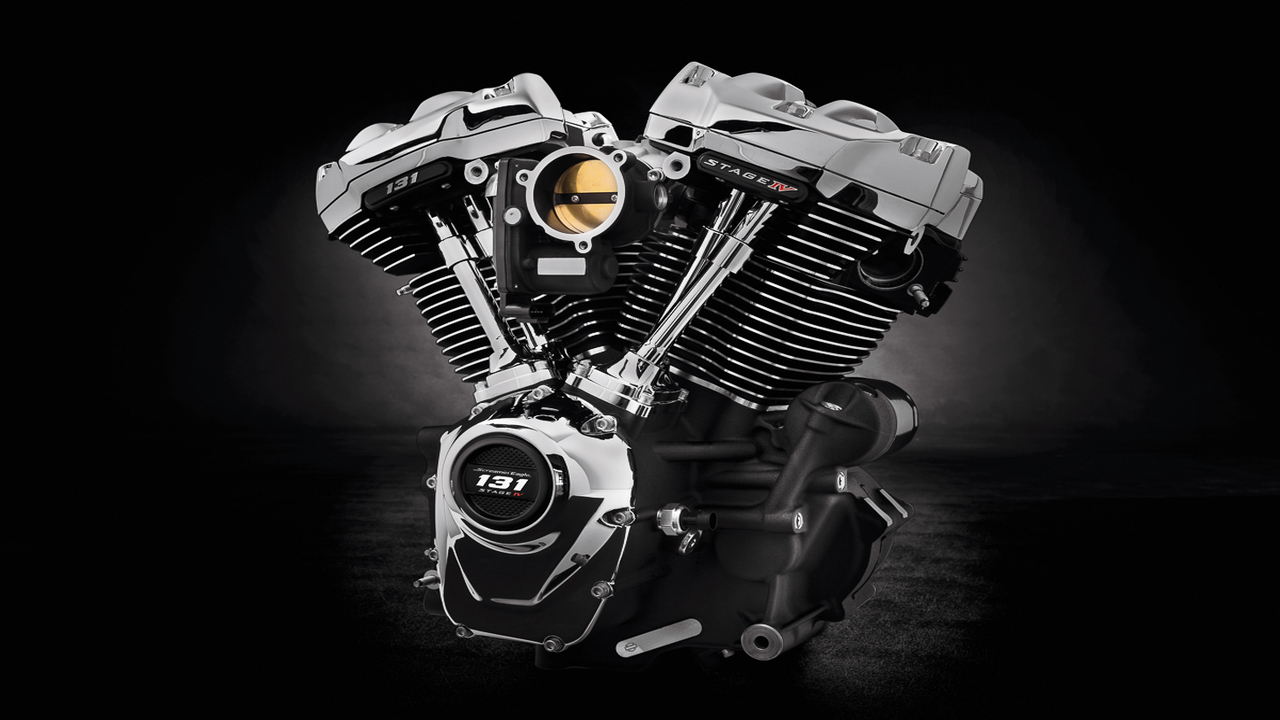Regarding American-made motorcycles, two iconic names stand out above the rest: Panhead and Shovelhead. Both of these V-twin engines are synonymous with the Harley-Davidson brand and have gained a cult following among motorcycle enthusiasts.
However, the debate between which engine is better has been ongoing for decades. Some swear by the classic design and reliability of the Panhead, while others praise the raw power and customizable potential of the Shovelhead. As a motorcycle enthusiast, it is important to understand the differences between these two legendary engines in order to make an informed decision.
Here, we will discuss Panhead Vs Shovelhead, as well as explore the pros and cons of each engine. So, buckle up and get ready to ride through the world of Panhead and Shovelhead engines, and perhaps find a new appreciation for the one you may not have initially favoured.

Panhead Engine
The Panhead engine holds a significant place in motorcycle history and development. Introduced by Harley-Davidson in 1948, the Panhead engine featured a new design that incorporated overhead valves, replacing the previous side-valve configuration.
This innovation brought improved power and performance to Harley-Davidson motorcycles. The name “Panhead” comes from the distinctive shape of the rocker covers, which resembled upside-down pans.
Over the years, the Panhead engine underwent several improvements and modifications, including increased displacement and refined cooling systems. Although the production of the Panhead engine ceased in 1965, its influence can still be seen today in the classic style and performance of Harley-Davidson motorcycles.
|
Years of production |
1948-1965 |
|
Displacement |
61 cubic inches (1000cc) |
|
Cooling system |
Air-cooled |
|
Valve configuration |
2 valves per cylinder |
|
Valve arrangement |
Overhead valve (OHV) |
|
Fuel system |
Carbureted |
|
Compression ratio |
7.0:1 |
|
Power output |
Varied depending on model and modifications |
|
Transmission |
4-speed constant mesh |
|
Ignition system |
Battery and coil |
|
Lubrication system |
Dry sump |
Key Features
- High-performance V-twin engine
- Air-cooled for optimal heat dissipation
- Large displacement for increased power and torque
- Dual overhead camshafts for precise valve control
- Fuel-injected for improved fuel efficiency and throttle response
- Smooth and responsive power delivery
- Robust and durable construction
- Designed for long-distance touring and highway cruising
- Iconic Harley-Davidson styling and sound
Shovelhead Engine

The Shovelhead engine is an iconic part of Harley-Davidson’s history. Introduced in 1966, it replaced the previous Panhead engine and represented a significant evolution in motorcycle technology.
The Shovelhead engine got its name from the shape of its rocker box covers, which resembled the head of a shovel. One of the key advancements of the Shovelhead engine was the introduction of aluminium heads, which improved heat dissipation and overall performance.
Over the years, the Shovelhead engine underwent several updates and modifications to enhance its reliability and power output. Despite being discontinued in 1984, the Shovelhead engine remains a popular choice among motorcycle enthusiasts for its unique design and classic appeal.
|
Specification |
Value |
|
Engine Type |
V-twin |
|
Displacement |
1200cc (74 cubic inches) – 1340cc (80 cubic inches) |
|
Bore and Stroke |
3.498 in x 3.8125 in |
|
Compression Ratio |
7.0:1 – 8.5:1 |
|
Horsepower |
60 – 80 HP |
|
Torque |
70 – 90 lb-ft |
|
Ignition System |
Points, later models equipped with electronic ignition |
|
Cooling System |
Air-cooled |
|
Valve Train |
Pushrod-operated overhead valves |
|
Fuel System |
Carbureted, later models equipped with fuel injection |
Key Features
- Classic V-twin design
- Air-cooled engine
- 45-degree angle between the cylinders
- Overhead valve configuration
- Rigid mounting system for increased stability
- Durable cast iron construction
- External pushrod tubes for easy maintenance
- Large displacement for powerful performance
The Comparison Between Panhead Vs Shovelhead Engine

Both engines have their unique characteristics and appeal to different riders. The Panhead, introduced in 1948, features a distinct shape flathead design with overhead valves and is known for its smooth power delivery and reliability.
On the other hand, the Shovelhead, introduced in 1966, has a more modern overhead valve design characterized by its distinctive shovel-shaped rocker box covers. The Shovelhead offers more power and engine performance than the Panhead but also requires more maintenance. Below we discuss Panhead Vs Shovelhead:
| Criteria | Panhead Engine | Shovelhead Engine |
| Introduction | Introduced in 1948 | Introduced in 1966 |
| Valve Configuration | Overhead valve (OHV) | Overhead valve (OHV) |
| Cylinder Configuration | V-twin | V-twin |
| Cooling System | Air-cooled | Air-cooled |
| Ignition System | Mechanical points | Electronic ignition |
| Oil System | Dry sump | Dry sump |
| Displacement | 61 cubic inches (1000cc) or 74 cubic inches (1200cc) | 74 cubic inches (1200cc) or 80 cubic inches (1340cc) |
| Horsepower | Varies depending on modifications, typically around 55-75 hp | Varies depending on modifications, typically around 60-80 hp |
| Torque | Varies depending on modifications, typically around 60-70 lb-ft | Varies depending on modifications, typically around 70-80 lb-ft |
| Transmission | 4-speed | 4-speed |
| Notable Features | Distinctive pan-shaped rocker box covers | Distinctive shovel-shaped rocker box covers |
| Availability | Produced from 1948-1965 | Produced from 1966-1984 |
Feature Comparison
| Panhead Engine | Shovelhead Engine |
| Overhead Valve Design | Overhead valves |
| Hydraulic Lifters | Cooling fins |
| Dual Spark Plugs | Dual spark plugs |
| Alternator Charging System | Replaceable cylinders |
Differences In Performance Between Panhead And Shovelhead Engines

When comparing the performance of Panhead and Shovelhead engines, there are several key differences to consider. The Panhead engine, which was produced from 1948 to 1965, is known for its smoothness and reliability. It features an overhead valve design and produces a moderate amount of power.
On the other hand, the Shovelhead engine, produced from 1966 to 1984, is known for its increased power and torque compared to the Panhead. It features an improved top-end design and larger valves, resulting in improved performance.
However, the Shovelhead engine is also notorious for its tendency to overheat if not properly maintained. Overall, while both engines have their strengths and weaknesses, the Shovelhead engine generally offers better performance and power compared to the Panhead engine.
Background And Timeline:

Harley Davidson started their journey in 1903. Soon, they became the leading motorcycle manufacturer worldwide. Harley has continuously updated its motorbike designs to maintain its superiority. Similarly, they have updated the engine to keep up with the updated motorcycle and satisfy their consumers.
Following the trend, Harley introduced the Panhead engines in 1948. It replaced the Knucklehead engines that Harley used from 1936 to 1947. The engine was quite successful and well-received by the consumers. Next, in 1965, Harley once again replaced the Panhead engine with the Shovelhead larger engine. It continued to rule Harley heavier bikes till 1984.
The Difference In Their Appearance
The shape of the Panhead and Shovelhead engine is self-explanatory. Firstly, the rocker head of the Panhead engine looks similar to a cooking pan. Secondly, when you look at the rocker head of the Shovelhead engine, it looks like an old coal shovel.
Therefore, you may easily identify these two engines simply by looking at their shape. It will be crucial for newbies because they often face difficulty identifying the engine types.
Engine Design:

Technically, both Panhead and Shovelhead engines are identical. These two are V-twin engines. Also, they have a four-valve and twin-cylinder design. Thus, these engines are made with a similar design. There’s nothing you can differentiate between these two engines.
Displacement Capacity:
The displacement capacity is essential for motorcycle engines. An engine can generate more power with a higher displacement rate. So, we should look at the displacement rate of the Shovelhead and Panhead engines.
For Panhead, there are two different variations. These two variations have different displacement capacities. These are:
- Panhead E and EL are two of the smaller engines. These two engines have 61 cubic inches of displacement capacity.
- Panhead engines‘ F and FL series are slightly larger than the E and EL series. Their displacement capacity was 74 cubic inches.
As the information shows, Panhead has two different series. The F and FL series were larger, so they had more energy. On the contrary, Harley Shovelhead engines were larger than both versions of the Panhead engines.
- The larger Shovelhead engine has 80 cubic inches of displacement capacity. This is understandable because Harley introduced the engine to accommodate bigger motorcycle models.
- The smaller shovelhead engine has a displacement rate of 74 cubic inches. It is slightly bigger than the F and FL version of the Panhead engine. They introduced it for the Harley low-rider FXS models in the 1977 motor show.
As you see, Harley had made the Shovelhead engine considerably bigger than the Panhead engine. They did it purposefully to help their bigger and more powerful engine get more torque. It is also crucial to boost motorcycles’ speed and riding performance.
Shovelhead Engines:

Over the years, Shovelhead engines had different horsepower ratings. It varied from 60HP to 66HP during its entire timeline.
- From 1966 to 1969, Shovelhead engines had 66HP capacity with 5600RPM. These engines were GLH versions.
- The engine capacity decreased to 62HP in 1970 and continued till 1978. It has a 5400RPM rating at that time.
- Harley further reduced the power of their Shovelhead engines to 60HP. The engines from 1978 to 1980 had 60HP. However, consumers didn’t like the continuous decrease in engine power.
- In 1981, Harley again increased the engine capacity to 65HP. They continued it till 1984 for all the Shovelhead engines until the Evolution engine took over.
As the discussion shows, Harley had continuously reduced and increased the power of Shovelhead engines. It didn’t go through a steady rise in the capacity rating.
Panhead Engines:


Harley engines made Panhead engines among the most popular ever. However, it has less power than its predecessor, the Shovelhead engine. It is understandable because the Panhead engine had to deal with smaller Harley engines.
There were two different models of Panhead engines. These two variations of Harley Panhead had 50HP to 55HP capacity. So, it was slightly underpowered than the Shovelhead engines.
Bore And Stroke Design:
The engine‘s bore and stroke design and size also control its capacity. Furthermore, people refer to it as engine size. So, let’s see the difference in the size of Shovelhead and Panhead engines.
The larger 80-inch Shovelhead engine featured 3.489 inches of bore diameter. Also, it has 4.250 inches of stroke size. On the contrary, Panhead engines had similar bore and stroke designs. Its bore and stroke were 3.4 inches and 3.9 inches, respectively.
Starting System:
Panhead and Shovelhead saw one of the biggest overhauls in Harley’s engine design. The difference was most prominent in their starting mechanism. Until the Panhead engines, Harley Davidson motorcycles used the conventional kick-starter mechanism. It needed physical strength to kick-start the engine.
As Harley changed the Panhead engine and shifted to the Shovelhead engine, it also removed the kick-starter mechanism. Harley has introduced their electric start for Shovelhead engines. It improved the engine fuel efficiency and riding smoothness.
Advantages And Disadvantages Of Shovelhead And Panhead Engines
 Choosing between a Panhead and a Shovelhead engine has advantages and disadvantages. The Panhead engine, known for its distinctive pan-shaped rocker covers, offers a smoother ride and better overall performance. It has a larger displacement and higher compression ratio, which can result in increased power and torque.
Choosing between a Panhead and a Shovelhead engine has advantages and disadvantages. The Panhead engine, known for its distinctive pan-shaped rocker covers, offers a smoother ride and better overall performance. It has a larger displacement and higher compression ratio, which can result in increased power and torque.
However, the Panhead engine is also more complex and challenging to maintain and repair. One of the advantages of Shovelhead and Panhead engines is that they provide a smooth ride even in excessive heat, thanks to their reliable rear suspension system, like the Electra Glide.
Pros Of Panhead:
- Panhead reduced the upkeep time compared to its previous versions
- It has improved oil control and efficiency
- The noise level reduced considerably and became tolerable
- It reduced the oil leaking problem of the earlier engines
Cons Of Panhead:
- The Panhead engines are pricier than other Harley engines
- Its kick-starter mechanism was inaccurate and required strength
Pros Of Shovelhead:
- Shovelhead engines are relatively cheaper
- The engine has increased horsepower
- Harley introduced kick-starter with Shovelheads
- Better performance at a higher combustion rate
- Improved air cooling facility with shallow chambers
Cons Of Shovelhead:
- Maintenance and repair costs
- Vibration
Panhead Vs. Shovelhead Engine: Which Is Better?

It’s time to decide on the Panhead vs. Shovelhead engine discussion. In reality, both engines perform brilliantly. Also, we must understand that these two engines are complete from two generations. Yet, both engines were capable of holding their performance and reliability greatly.
Panhead came with reduced noise and oil leaks. So, it helped Harley motorcycles deliver better oil efficiency. Also, decreased noise meant riders would enjoy better smoothness. On the contrary, with its electric start, Shovelhead was a revolution in the motorcycle industry. It featured 10% more power than its previous version of Panhead. Yet, it was cheaper, and that’s what makes it a better choice than Harley Panheads.
Conclusion
Motor motorcycle enthusiasts have long discussed the debate between Panhead Vs Shovelhead engines. Both engines have their unique characteristics and appeal to different riders. With its classic design and smooth performance, the Panhead is favoured by those who appreciate the nostalgia and elegance of vintage motorcycles.
On the other hand, the Shovelhead, known for its power and reliability, attracts riders who prioritize performance and durability. Ultimately, the choice between these iconic engines comes from personal preference and riding style.
Whether you’re a fan of the timeless beauty of the Panhead or the raw power of the Shovelhead, both engines offer an incredible riding experience that will surely satisfy any motorcycle enthusiast.
FAQ’s
The best Harley engine is subjective and depends on individual preferences and needs. Harley-Davidson offers a range of engines with different characteristics, such as the Milwaukee-Eight engine, known for its power and smoothness, or the Twin Cam engine, known for its classic design and reliability.
